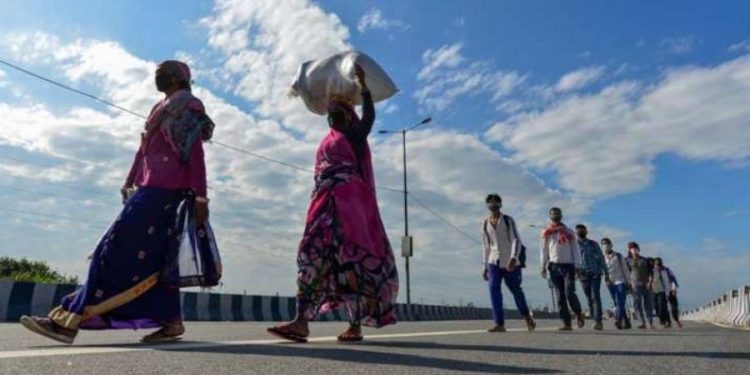Dr Errol D’Souza
Is migration to urban areas advantageous for rural migrants? Mostly it is assumed that cities play an important role as a conduit for many to get away from rural poverty. Yet my limited experience of working with underprivileged migrants indicates that cities fail them.
Cities do provide opportunities to earn incomes but they are unable to provide a break from the past for successive generations of low-skilled migrants; and for most such families, there is no perceptible progress in their standards of living. Even when migration provides occupational mobility to the discriminated-against castes, this does not always transform into social or geographical mobility.
Social background, including religious and linguistic credentials, still dominates the access to the location and quality of residence in cities. We have evidence in Gujarat and in other states of underprivileged castes or religious minorities being refused the choice of purchasing or renting apartments or of being quoted substantially higher prices and rents.
Cities across the world were hubs of factories and industrialisation. As transportation costs for goods and people began to fall and with the growth of road networks, logistics, and containerisation, industry began to vacate urban centres. Globalisation spawned geographically dispersed supply chains that resulted in unbundling and offshoring of production that was organised to cater to shorter product life cycles. Firms began to differentiate their products to mitigate the impact of competition by making small functionality changes to products and rapidly phasing them out to feed dynamic consumer demand. Jobs that could be automated began to exit from city centres and supply chains responded by reducing production cycle times and increasing the speed of delivery to customers.
The jobs that remained behind in urban centres were those that required unstructured cognitive activity or unstructured physical activity. Those tasks that require unstructured cognitive activity and involve problem-solving capabilities, creativity, and intuition that characterise professional and technical occupations, are difficult to automate, and these stayed in cities with high pay being offered for those performing them.
Similarly, tasks requiring unstructured physical activity such as visual and language recognition, situational adaptability, and in-person interactions such as blue collar tasks that are difficult to automate, continue to be offered as low wage jobs in cities.
To the extent that automation substitutes for low-skill labour, the wage of low-skill and mostly blue collar labour decreases and skilled labour that entails cognitive activity continues to enjoy gains. The wages and salaries of skilled workers then result in heftier earnings profiles. Booming and prosperous cities replaced industrial jobs with services and paid more to those jobs that were relatively more intensive in skills.
The wage premium to those in skills bid up the price of urban real estate as their demand to be close to the city centre to avoid long commutes and to enjoy better urban amenities grew. The less skilled who cannot pay high rents had to move elsewhere and began to inhabit slums or on the pavements. Their growth in incomes did not keep pace with the higher growth in rentals for housing or real estate prices. Limitations of location and infrastructure in cities drove up the price of urban space, and house prices rose at a faster rate than wages for those who are unskilled. Urban populations increased through in-migration and a natural increase in population. The first stage of the demographic transition is where increases in population are propelled by a decline in death rates, stimulating a natural increase in urban populations apart from that stemming from migration. Improvements in health care reduced death rates. Across the world, death rates in slums are almost as low as in non-slum areas, but birth rates are significantly higher, resulting in increases in slum population being led by natural increases in population. Higher life expectancy in cities triggers slum growth and congestion.
Individuals living in slums however experience abysmal living conditions as they are poorly covered by public infrastructure services. It is also common to have many individuals share restricted space that is allocated between themselves via work shifts. They pay a “premium” for the living conditions that they inhabit. Those who cannot afford this “premium” end up staying in the open in the streets. (To be concluded)
The writer is a Professor of Economics and Director at the Indian Institute of Management Ahmedabad. The Billion Press.







































